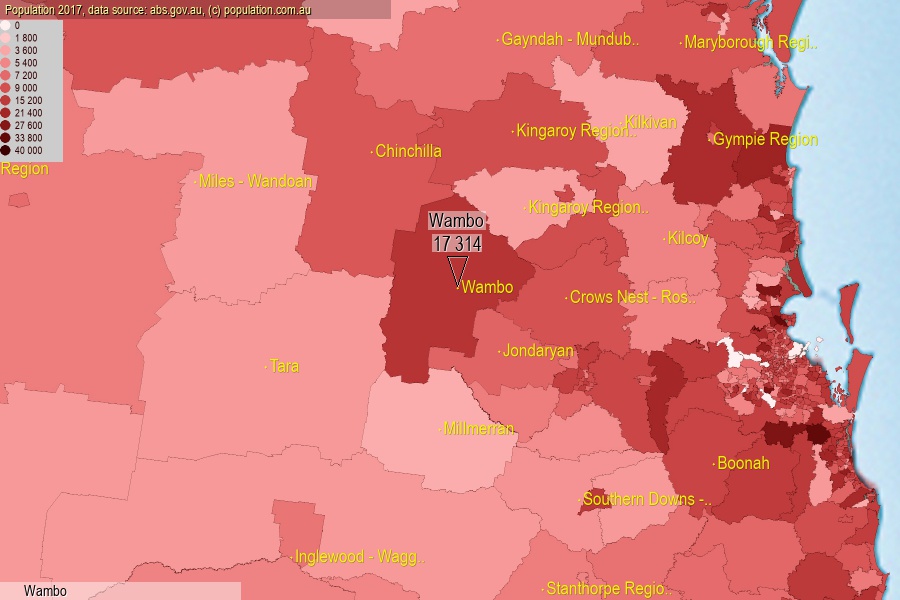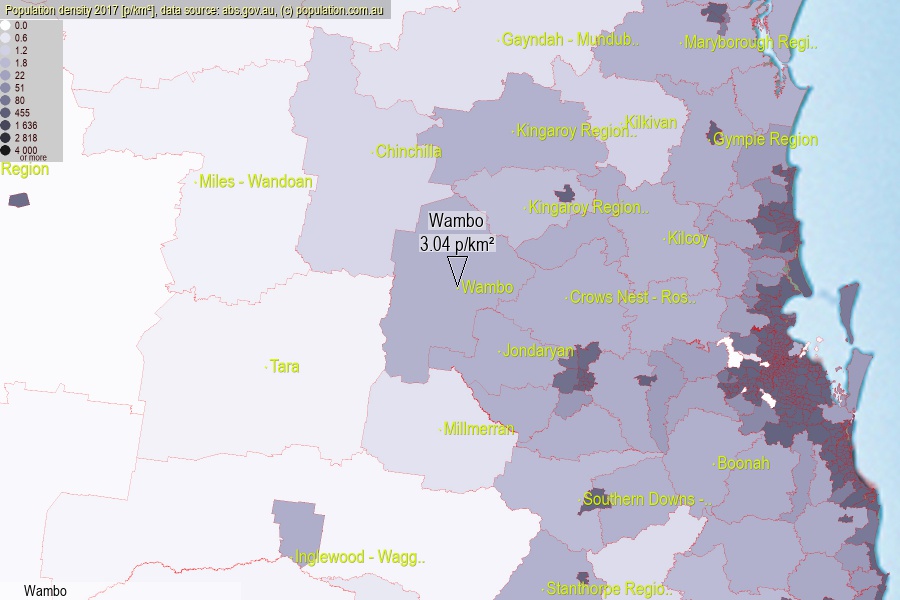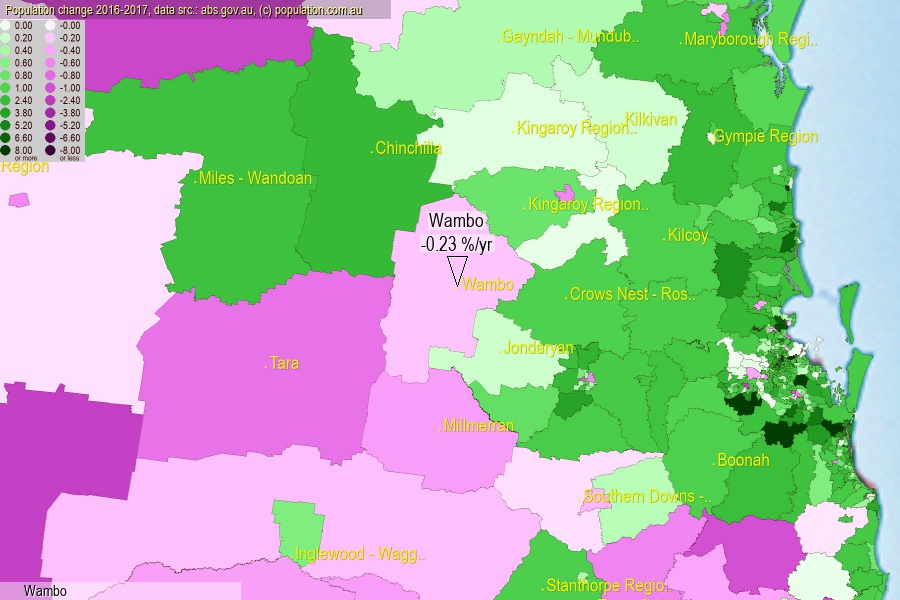 population.com.au
population.com.auLast official estimated population of Wambo (as Statistical Area Level 2) was 17 314 people (on 2017-06-30)[2]. This was 0.07% of total Australian population and 0.347% of QLD population. Area of Wambo is 5 700.30 km², in this year population density was 3.04 p/km² . If population growth rate would be same as in period 2016-2017 (-0.23%/yr), Wambo population in 2025 would be 16 997. [0]



Click to enlarge. Wambo is located in the center of the images.
Population [people], population density [p./km²] and population change [%/year] [2]
View borders » (new window) [4]
[1991-1992] +0.71 %/Yr.
[1992-1993] +0.20 %/Yr.
[1993-1994] -0.37 %/Yr.
[1994-1995] -1.41 %/Yr.
[1995-1996] -0.79 %/Yr.
[1996-1997] -0.38 %/Yr.
[1997-1998] -0.22 %/Yr.
[1998-1999] -0.27 %/Yr.
[1999-2000] +0.74 %/Yr.
[2000-2001] +0.13 %/Yr.
[2001-2002] -0.09 %/Yr.
[2002-2003] -0.12 %/Yr.
[2003-2004] +0.23 %/Yr.
[2004-2005] +1.13 %/Yr.
[2005-2006] +0.82 %/Yr.
[2006-2007] +1.37 %/Yr.
[2007-2008] +2.22 %/Yr.
[2008-2009] +2.67 %/Yr.
[2009-2010] +1.47 %/Yr.
[2010-2011] +2.89 %/Yr.
[2011-2012] +1.65 %/Yr.
[2012-2013] +1.45 %/Yr.
[2013-2014] -0.19 %/Yr.
[2014-2015] -0.47 %/Yr.
[2015-2016] -0.37 %/Yr.
[2016-2017] -0.23 %/Yr.
[0] Calculated with linear interpolation from officially estimated population
[1] Read more about SA2 and Australian Statistical Geography Standard (ASGS) on abs.gov.au
[2] Population data from Australian Bureau of Statistics (Population and density: 2017; change: 2016-2017)
[3] Digital Boundaries: Australian Statistical Geography Standard (ASGS) 2016.
[4] Border coordinates are simplifyed using Ramer-Douglas-Peucker algorithm.